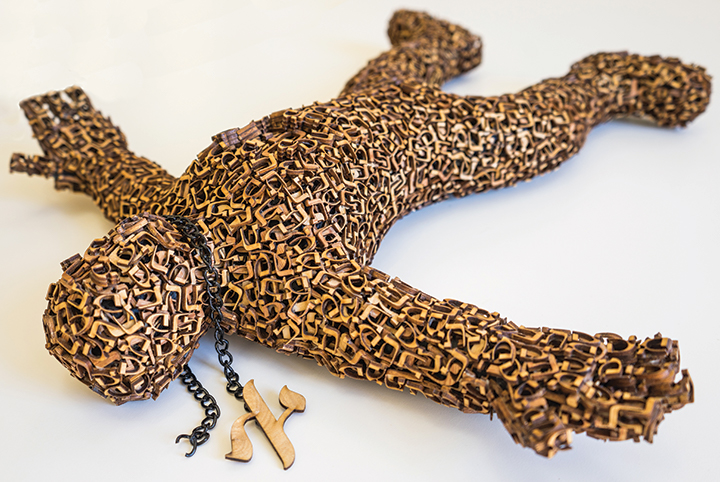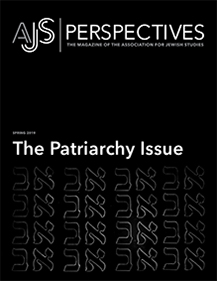
1. This is the Patriarchy Issue of AJS Perspectives. It provides an opportunity to think about patriarchy’s issue—about what issues from patriarchy.
2. What does patriarchy issue? To what does patriarchy give birth? Nothing but more patriarchy.
3. All birth sees the arrival of something new in the world … except for patriarchal issue. Patriarchy is nothing new. Sure, it claims to be like birth. Patriarchy in the academy gives birth to new PhD holders, new books, and new institutions. But none of these are new, because they are beholden to the patriarchy that grants PhDs, recommends publishing contracts, and funds institutions.
4. Because patriarchy is nothing new, the circulation of patriarchy happens through vessels that are ersatz and monstrous versions of uteruses.
5. Usually, monsters in cultures signify the uncanny anxieties of a dominant culture. But patriarchal issue is the monster about which not enough people are anxious. It is the monster that walks around every day, passing as just. It has no “tell” that signifies its difference. That is what makes it the most monstrous.
6. Sometimes monsters can do good, maximizing the flourishing of those in a community who are relatively powerless. Anyone who knows Isaac Bashevis Singer’s version of the golem story, in which the golem demonstrates that a rabbi has been framed for murder, knows this. That story is edifying because we readers know the difference between the monster and the human. It is not edifying for the monster: when the golem learns that humans know that he is not human, he wreaks havoc in Prague.
7. Not all humans have realized that the birth that results from patriarchal issue is neither human nor humane. It stops people from flourishing in seminar rooms, at conferences, in edited volumes, and in recommendation letters. It prevents others from being born; it prevents life while it hoards life for the patriarchy.
8. The monster of patriarchal issue should not be seen as a disease. If it were a disease, one could immunize oneself against it by just taking in a little patriarchy. But this fails, as countless numbers of well-meaning yet clueless men can testify (including this clueless gay man, who has coedited three volumes with fifty-two essays between them, only nine of which were authored by women).
9. How does one kill something that so many people fail to see as inhuman? There is not much else to do except to signal to others that a certain kind of monster is here, now, impeding human flourishing.
10. Sometimes this signaling occurs through a patient discourse that delineates a taxonomy of monsters, and persuasively classifies this monster as the kind that does not make for flourishing. At other times, it occurs through screaming. It is difficult to say that the discursive signal is more effective than the emotive and wordless one. Screams awaken sleepers and get them to see, even if we might think that screams have little argumentative power.
11. The inhumane monster, when shown that it is not human, will wreak havoc in a community. No one, frankly, should expect patriarchy to respond differently to this issue of AJS Perspectives. AJS members with longer memories will be able to tell persuasive stories of the greater havoc that would have resulted had this issue appeared two decades ago or more.
12. Given that patriarchy issues and reissues itself so well, the proper language to describe the appearance of the AJS Perspectives patriarchy issue is theological—that of miracle. That is hopefully enough to sustain a community’s efforts to kill the monster of patriarchal issue.

